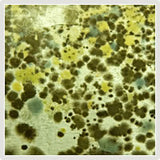 April showers can increase the amount of mold found inside and outside the home. Along with pollen from trees, grasses, and weeds, molds are an important trigger of allergic rhinitis, affecting nearly 40 million Americans, according to the American Academy of Allergy, Asthma & Immunology (AAAAI).
April showers can increase the amount of mold found inside and outside the home. Along with pollen from trees, grasses, and weeds, molds are an important trigger of allergic rhinitis, affecting nearly 40 million Americans, according to the American Academy of Allergy, Asthma & Immunology (AAAAI).
Are Menacing Molds Affecting Your Allergies?
“Mold spores contain allergens, substances that some immune systems recognize as dangerous,” said Robert K. Bush, MD, Fellow of the AAAAI and member of the AAAAI’s Indoor Allergen Committee. “Exposure to mold can trigger an allergic reaction such as nasal stuffiness, eye irritation, wheezing, coughing and hay fever-like symptoms.”
Molds are microscopic organisms that are pervasive in any outdoor environment. However, they may be brought inside via clothing, shoes and soils. Mold needs only a food source, warm environment and moisture to grow. Mold may be invisible to the eye or may look like furry growth, black stains or specks of black, white, orange, green and brown on surfaces. Large infestations of mold can usually be seen or smelled.
Where can mold be found?
Inside
- Basements or crawl spaces
- Near windows
- Under sinks
- Near leaky pipes
Outside
- Near heavy vegetation
- Near hay or straw
- In piles of leaves
- In grass
View Top 3 Air Purifiers for Mold Browse All Air Purifiers for Mold

 April showers can increase the amount of mold found inside and outside the home. Along with pollen from trees, grasses, and weeds, molds are an important trigger of allergic rhinitis, affecting nearly 40 million Americans, according to the American Academy of Allergy, Asthma & Immunology (AAAAI).
April showers can increase the amount of mold found inside and outside the home. Along with pollen from trees, grasses, and weeds, molds are an important trigger of allergic rhinitis, affecting nearly 40 million Americans, according to the American Academy of Allergy, Asthma & Immunology (AAAAI).